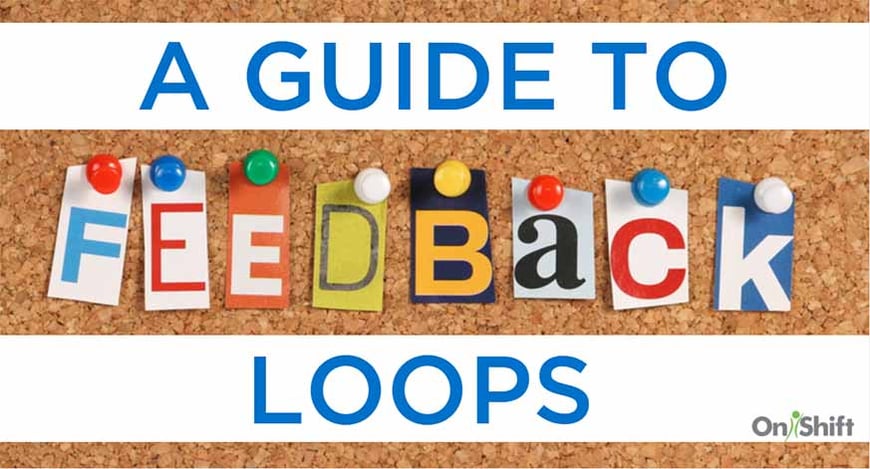April 2, 2018 | Mike Pumphrey
April 2, 2018 | Mike Pumphrey
 Employee feedback loops are an integral part of employee engagement in long-term care and senior living. But not every organization pays close attention to – let alone collects – frequent feedback from staff – both of which are missed opportunities when it comes to staff satisfaction and retention.
Employee feedback loops are an integral part of employee engagement in long-term care and senior living. But not every organization pays close attention to – let alone collects – frequent feedback from staff – both of which are missed opportunities when it comes to staff satisfaction and retention.
According to a report from Qualtrics, 60% of U.S. employees reported having a way to provide feedback, but only 30% said that their feedback is acted upon by their employer.
There’s no doubt that consistent employee feedback leads to greater engagement and retention and better performance. What’s more, workers whose employers act on their feedback are four times more likely to stay with a company than those who think their feedback changes nothing, Qualtrics also reports.
All of that in mind, here’s how senior care providers can create and successfully manage a feedback loop for greater employee engagement and reduced staff turnover.
The Three Guiding Principles Of Effective Feedback Loops
Anonymity
Most employees like to share their feedback—both positive and negative—but they’ll be much more inclined to be candid if they know their opinions won’t be used against them. Allowing employees the option to leave their name off comments will encourage more sharing of concerns and ideas.
Sharing
As managers and executives gather feedback, it’s important to keep everyone in the loop. Leaders should share what they’re learning from feedback and reiterate that they value the feedback they’re receiving. Leaders should also communicate that they are evaluating the information collected before making changes and taking action.
Action
That brings us to the action phase. Putting suggestions into practice and improving processes are the most effective way to keep employees engaged with the feedback loop process. If there’s an abundance of negative feedback on a particular topic, it’s up to the leaders to address the issue. Suggestions for process improvements should also be considered and discussed with those that offered them. Even suggestions that don’t seem feasible should be addressed, as a feedback loop should be non-discriminatory.
Failure to address feedback will lead to disengagement and potential turnover.
How To Gather Quality Feedback
Annual surveys are too infrequent to gather actionable information. A small issue that is not addressed right away may snowball into a larger problem and cause that employee to turn over before the next survey.
That’s why many organizations have begun conducting pulse surveys. These are shorter and more specific. They can be sent out as frequently as weekly and contain a simple question with the option to leave a comment. This frequency and brevity is beneficial and delivers:
An employee feedback loop in senior care is essential for employee engagement and retention. Incorporating a feedback loop gives leaders better insight into the underlying issues affecting an organization so they can take steps to make corrections and improve the overall workplace culture. Without an effective vehicle for feedback, communities are more likely to suffer from low morale and high turnover.
Subscribe to the OnShift Blog
Recent Posts
Categories
About Mike Pumphrey
Mike Pumphrey is Vice President of Product Marketing at OnShift. His expertise in staffing and labor management strategies in long-term care and senior living is foundational to his role leading OnShift’s Product Marketing team. Mike works hand-in-hand with state and national associations, senior care providers, and with OnShift’s Customer Success and Product teams to create impactful best practices aimed to help solve the daily workforce challenges in senior care. Mike shares insights, research and recommendations to improve clinical, operational, and financial outcomes through regular blog posts and conference speaking engagements.
See for yourself why thousands of providers rely on OnShift’s innovative software for recruitment, hiring, workforce management, pay and engagement. Request your personalized demo today.
